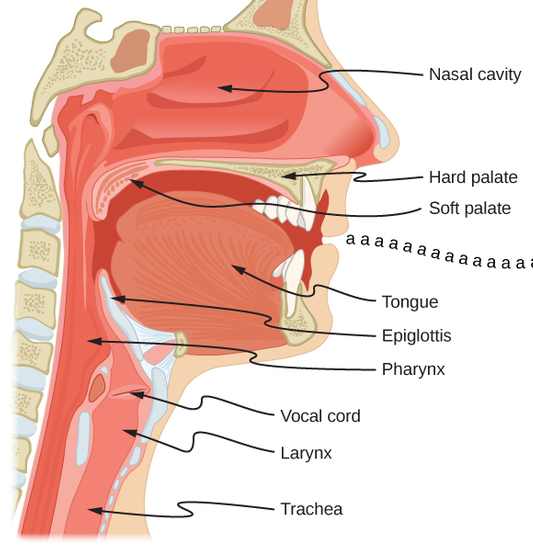Question
Question: Why don’t lungs collapse after forceful expiration? The two openings of the pharynx, one leading to ...
Why don’t lungs collapse after forceful expiration? The two openings of the pharynx, one leading to the trachea the other leading to the oesophagus, lie very close to each other. Yet, the food we swallow normally does not enter into our trachea. Why?
Solution
The lungs are two spongy, air-filled organs that are located on either side of the chest (thorax). The pharynx is the area of the throat behind the mouth and nasal cavity, as well as above the esophagus and trachea.
The trachea (windpipe) transports inhaled air to the lungs via tubular branches known as bronchi. The bronchi divide further into smaller and smaller branches (bronchioles), eventually becoming microscopic.
Complete answer:
The lung is an important organ for breathing. The structural and functional unit of the lungs is the alveoli which are air sac-like structure and help in the exchange of gases. We breathe in air and breath out carbon dioxide. The air from the nasal cavity travels through the pharynx, larynx, trachea and enters the lungs through bronchi which branches into bronchioles and alveoli.
Breathing is facilitated through the lungs due to its elastic properties, as well as the internal intercostal muscles, which lower the rib cage and reduce thoracic volume.
When the thoracic diaphragm relaxes during exhalation, the tissue it has depressed rises superiorly, putting pressure on the lungs to expel the air. Expiratory muscles, including the abdominal muscles and internal intercostal muscles, generate abdominal and thoracic pressure, forcing air out of the lungs during forced exhalation. After the forceful expiration, some amount of air is left in the alveoli. This is known as residual air which remains in the lungs even if we expire very forcefully, this prevents the lungs from collapsing.

The food we eat and the air we breathe travels the same path. The pharynx is responsible for transporting food and air to the esophagus (The oesophagus is a food tube that connects to the stomach) and trachea or the windpipe. The epiglottis is a cartilage flap that prevents food from entering the trachea.

Thus, the openings of the pharynx are very close to each other, but food does not enter the trachea due to a structure known as the epiglottis. The epiglottis is a flexible flap located at the upper end of the larynx. It functions as a switch between the trachea and the larynx, allowing air to enter the trachea but only food to enter the larynx.
Note: Exhaled air contains 4% carbon dioxide, a waste product of cellular respiration during energy production, which is stored as ATP. A pharynx is found in all vertebrates and is used for both feeding and respiration. The pharynx develops in all vertebrates during development through a series of six or more out pocketing on the lateral sides of the head. These out pocketing are pharyngeal arches, which give rise to a variety of structures in the skeletal, muscular, and circulatory systems.
